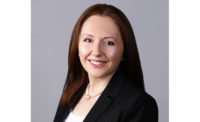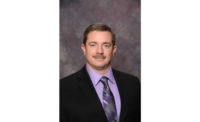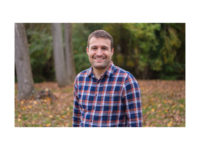Editor’s Note: Every successful project starts with a framework. A vision statement. A blueprint.
The editors of Engineered Systems are proud to present The Blueprint — a Q&A interview with HVACR engineering’s leading voices. These one-on-one discussions will examine the trade’s history, current industry trends, and the factors shaping the sector’s future.
Viking Cold Solutions is a thermal energy storage provider enabling flexibility and savings for the energy-intensive frozen/low-temperature cold storage industry. The company’s Thermal Energy Storage systems have saved clients more than 15,100 MWh of energy, reduced carbon footprint by more than 10,600 metric tons, and mitigated more than $17 million of product loss.
Recently, Collin Coker, vice president of sales and marketing, Viking Cold Solutions, sat down with Engineered Systems’ editor-in-chief, Herb Woerpel, to discuss the state of the thermal energy storage market, Viking Cold Solutions’ role in that market, and more.
Engineered Systems: Introduce us to Viking Cold Solutions and the type of equipment and technologies you manufacture?
Collin Coker: Viking Cold Solutions offers a thermal energy storage, or TES, technology that adds energy efficiency and flexibility to low-temperature freezer applications. Think about the gel packs in your child’s lunchbox. Those are full of a material that's designed to absorb heat and help keep things cold. We've taken that simple concept and added intelligence to apply it to a much more robust industrial application. We configure individually sealed thermal cells into modules that fit neatly above the top pallet positions of the racking infrastructure inside industrial frozen food warehouses. When frozen, the cells are in a charged state and serve as a form of a battery, storing energy in the form of cold.
Normally, the frozen food would absorb heat as it comes into the room. Lots of refrigeration is then required to pull that heat out of the food and cool the room back down and maintain that constant temperature. With TES, our cells absorb up to 85% of the heat infiltration. As they absorb and consolidate that heat, they continuously rain down cold air. Because cold air sinks and hot air rises, we're using the laws of convection to maintain a very stable temperature for the food without active refrigeration.
Engineered Systems: I’m assuming there is some sort of mechanism to control this process?
Coker: We pair intelligent controls with the cells, which allows us to safely turn the refrigeration off for very long periods of time, specifically during the peak periods of the day when energy is most expensive and refrigeration runs the least efficient. When we turn that refrigeration off, the cells start to go through a phase change. As they transition from a frozen to a slushy state, they become 300 times more heat absorbent than frozen food and maintain temperatures.
Engineered Systems: So the idea is to absorb heat with these cells before the food can?
Coker: Yes. The capacity our phase change materials (PCM) to absorb heat using the latent heat of fusion during a the phase change goes up 300 times from about half a Btu per pound of mass up to 130 Btu. So now the cells act like a big heat magnet, and we're able to hold that heat near the top of the room until we're ready to turn the refrigeration system on at the right time.
Once the system comes back on again, all the heat isolated in this bank of cells can be pulled out much more effectively than having to pull that heat out of a whole room full of frozen food. So, we’re offering a very efficient and effective system that requires less refrigeration runtime over a 24-hour period. This enables facilities to shut their refrigeration systems down during the most opportune times of day and leverage more compressor runtime at night.
Engineered Systems: Would you deem this a relatively new technology?
Coker: We’re providing energy storage as a system solution, which is brand new to the market. The phase change physics have been around forever but never fully leveraged with intelligence in industrial refrigeration applications.
Engineered Systems: What does your phase change material consist of?
Coker: It's a mixture of different types of salts and water that are designed to have a freeze point or phase change at an exact temperature. These PCMs enter the phase change at the exact point to maintain the required temperatures of each facility. So, depending on the application, temperatures can range anywhere from 0°F to minus 10° for most foods down to minus 14° or even minus 20° for ice cream and temperature sensitive products. Other applications may go up to 28°. We have a portfolio of formulas that fit almost any frozen application from minus 20° to 32°.
Engineered Systems: So, there are no pumps, motors, or actuators then?
Coker: That's what's so beautiful about the technology. It’s elegantly simple and does not require any additional energy. The cells sit passively in the rack system, and we use the customer’s existing refrigeration system to remove the heat at the most beneficial times. The systems are non-mechanical; there's nothing that moves.
Engineered Systems: As a customer, when I buy a TES system, what exactly does it consist of?
Coker: Three elements. The first part is the cell with PCM. The second part is the intelligence, which is a simple building automation-type controller that basically acts as a subsystem to the existing staging equipment of the compressors. Third, we have a 24/7 monitoring and notification platform. Through the controller, we have a cloud-based system that allows us to look at everything all the way down to a granular view of the evaporator fans, the compressors, and not just the building meter. And we offer real-time customer access through a portal as well as a post-day report that shows exactly how their facility is running for every minute of the day, 24/7. We monitor air temperature, the food simulated temperature, and cell temperatures. The system shows which units ran at what time, what the demand picture looks like, what their usage was, and we compare that against the baseline. The customer gets a daily report card of run time, temperatures, and energy performance.
Engineered Systems: What type of maintenance does the TES system require?
Coker: We’ve had customers that we've been serving for seven years, and other than a few electronic sensors we’ve replaced over those seven years, and some software updates that we’ve pushed through, there’s really no maintenance at all.
Engineered Systems: As an engineer, why should I consider this technology?
Coker: For years, a plethora of different building automation efficiency measures have been developed like LED lighting, variable-speed motors, compressors, fast doors, etc. All of those things offer a better way to run, but unless you have a tool that allows you to store energy — whether it's a traditional battery or thermal battery — there's only so much you can do through that intelligence. So, we’re now introducing to the market this thermal battery that incredibly also adds efficiency, has a much longer discharge, and is more environmentally friendly than a traditional lithium-ion battery. It's flexible, so we can manage for load shifts, or we can manage for efficiency and reduction of kilowatt hours, or both. We can support demand-response programs, or we can implement a permanent demand reduction program. This technology is a big enabler that provides engineers the capacity and flexibility they’ve never had before.
Engineered Systems: How mature is this technology?
Coker: We're well beyond the startup phase and have had installations in California, New England, and Puerto Rico for years. We recently installed our first international locations in Monterrey, Mexico, and in New South Wales, Australia, and have had a lot of pull from Canada. This technology is accessible worldwide.
Engineered Systems: What’s been Viking Cold’s biggest challenge over the last 18 months?
Coker: Awareness. The primary questions are what does this company do, and how does the technology work? We constantly hear, “This is really interesting; I've never seen it before; do you have fluid moving through the refrigeration system?” So, breaking it down and explaining that it’s non-mechanical and very simple is part of the challenge. Getting people to believe that this technology can provide savings in the range of 10-50% in some applications is also a challenge. A lot of folks are fairly guarded, because that level of savings has never been achieved in this industry before. It just seems too good to be true.
Engineered Systems: What trends do you think will have the biggest impact as this technology moves forward?
Coker: The utilities are becoming customers. We’ve had a number of utility and power provider programs promote our systems. Recently, Eversource provided a grant to support the technology. I think utilities continue to recognize this as a “thermal battery” and an enabler for them to tackle large loads in new and existing C&I facilities.
Engineered Systems: What’s the biggest focus for Viking Cold Solutions in 2019?
Coker: We’re focusing on our scale. We’ve now expanded our sales presence and begun to build a channel partner network that ranges from refrigeration companies to ESCOs with both regional and national footprints. This is a year for us to hit that tipping point and start to scale the business through our channel partner network and other innovative solution providers. Our retail energy providers and energy management companies are recognizing Viking Cold as a legitimate player that’s bringing a very impactful tool to the game.
Engineered Systems: What does the future hold for thermal energy storage industry as a whole?
Coker: Thermal energy storage is one piece of the broader distributed energy network. The industry is challenged with managing renewable resources, including wind, solar, microgrids, and various types of storage technologies. There’s not one solution that’s going to fix all problems. It's a combination of things; it's the ability to leverage intelligence to make all of those things work together for the betterment of our society. In our case, we’re helping to provide greater protection to the global food supply with a much lower impact on the environment.






